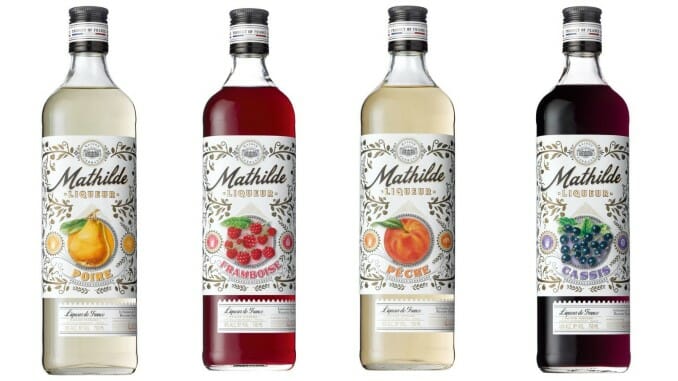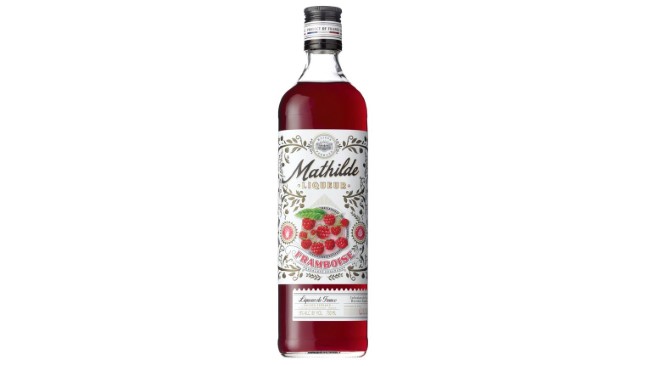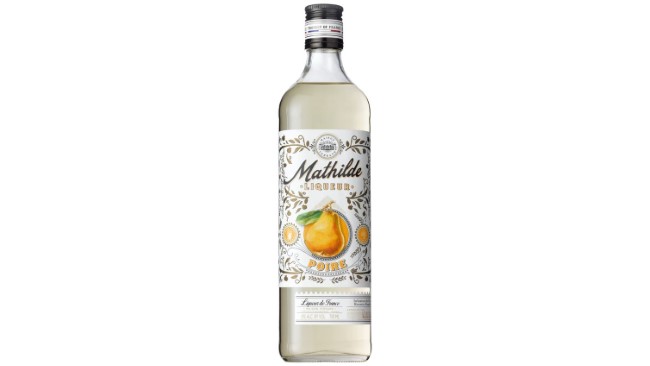
Liqueurs are the Swiss army knife of home cocktailing, but they may also be the most intimidating and least understood family of ingredients you’re likely to need in order to make certain drinks. Whereas one can more or less taste a few gins, whiskeys or rums and have a decent idea of what the category is all about, just saying “liqueur” gives you very little information—it only implies a lower-strength (ABV-wise) product that has typically been sweetened with sugar and flavored with an array of potential flavors, including fruits, herbs and spices. As for how one consumes liqueurs, there are as many potential modes as there are consumers—they can make up a very small amount of a cocktail, or they can simply be consumed over ice, or mixed with club soda. Hell, they can even be used in baking.
One common family of liqueurs, however, are fruited liqueurs that are meant to capture the specific flavor of one fruit variety at a time. On the U.S. market, many of these bottles are sadly filled with artificial flavors and sweeteners, making fruited liqueur something of a dicey proposition and a category that doesn’t receive much esteem. They remain vital, however, in the construction of certain cocktails, especially in the tradition of exotic drinks/tiki cocktails where fruit syrups have always been a vital addition. Quite a few tiki drinks, for instance, call for apricot or peach liqueur, and you can also find recipes calling for raspberry or pear fruit flavors as well.
Curious about expanding my own cocktail liqueur library, I jumped at a chance to taste an array of fruited liqueurs that were new to me: the Mathilde Liqueur line from Maison Ferrand. Ferrand is of course a major French alcohol conglomerate, the owner of entities such as the wide-ranging Plantation rum line, as well as Citadelle gin and Ferrand cognac and dried curacao. But they also produce natural fruited liqueurs without “stabilizers or preservatives,” using traditional techniques of alcohol infusion, fermentation and distillation.
I was able to taste the four core entries in this line, infused with raspberry, pear, peach and blackcurrant fruits. Here are some thoughts on each.
Mathilde Peche (Peach)ABV: 18%
I was particularly curious to try to peach liqueur, because this is a style of liqueur you actually see call for fairly often in the world of tiki cocktails. It’s essential in classics of the genre such as the Missionary’s Downfall or the Aku Aku, where it is paired with complementary flavors such as pineapple, mint and white rum.
On its own, however, Mathilde’s peach liqueur has a very pelasant, genuinely fuzzy peach aromatic, with touches of white grape on the nose and some more vinous traces. It’s also a little floral, with hints of rose petals. On the palate it’s very sweet and bursting with juicy peach and vanilla flavors, but tempered with a bit of floral complexity.
Like most Mathilde liqueurs, this one is made by macerating the entire fruit in alcohol—skin, flesh, pit and all. That alcohol is then diluted to proof and sweetened to taste. It’s likely too sweet for consumption over ice, but it would probably be delicious when mixed in small quantity with soda or champagne. I expect I will primarily use this for tiki cocktails, however.
Mathilde Framboise (Raspberry)ABV: 18%
Raspberry liqueur is probably the least intimidating to consumers, as they’re more likely to be familiar with it in some capacity. Mathilde’s product is made with three European raspberry varieties—the Lloyd George of Scotland, and two from Burgandy, the Rose de Plombières and the Violette de Boux. All three varieties are pressed into a puree and then macerated with alcohol.
The result is bright raspberry on the nose of this liqueur, but also something that slightly evokes a note more like tart cranberry. On the palate, I was surprised to find that this one is actually less syrupy in texture and purely sweet in taste than the peach or the pear liqueurs, and is instead a bit more balanced, with floral hints similar to what I was picking up in the peach liqueur. This makes the raspberry a bit easier to drink neat, and I expect there might actually be a consumer out there who would choose to drink this over ice. I would imagine, however, that the vast majority of this liqueur would find its way into mixed drinks, as it would likely play very nicely with gin and vodka in particular.
Mathilde Poire (Pear)ABV: 18%
Mathilde’s pear liqueur is made with the Bon-Chrétien Williams pear, better known in the U.S. as the Bartlett pear, which the company says “boasts a golden skin and very tasty and juicy flesh.” Regardless, pear is always a more delicate and ephemeral flavor than the likes of raspberry, and is generally considered to be harder to accurately capture. In acknowledgement of this, the company says this liqueur is “enhanced with a touch of quince, a pear-like fruit with an intense aroma. This particular step intensifies the pear flavor.”
On the nose, this liqueur reveals my own lack of experience with pear liqueurs, because my immediate impression is to say that it actually smells quite a bit like malt whisky. This actually makes sense, as there’s no shortage of lighter, fruitier scotches with notable pear flavors. On the nose here it strikes me as lightly fruit, slightly malty and honeyed. I am very curious what a group of American consumers would peg it as if you passed around a glass of this and asked them all to smell it. I can’t quite decide if they would actually land on “pear.” Regardless, this one is very sweet indeed on the palate, and registered to me as the sweetest of the group, with a flavor reminiscent of something like the fruity-floral combination of St-Germain. At the same time, though, there’s also an unexpected spiciness to this one that registers like a light impression of allspice.
All in all, this was a very interesting bottle. It’s far too sweet for me to ever consume on its own, but it could make a very interesting simple syrup replacement in cocktails. More experimentation will be needed on this one.
Mathilde Cassis (Blackcurrant)ABV: 16%
The American palate isn’t very accustomed to cassis/blackcurrant as a flavor, which makes this one stand out as the most “exotic” of the Mathilde liqueurs. To quote the company’s description:
Cassis has been referred to as the “Elixir of life” since the 18th century. Cassis liqueur has been made across several regions in France for decades. Some of the finest blackcurrant berries are found in Burgundy and are called Noir de Bourgogne, and we use those as well as berries from the Loire Valley, called the Royal de Naples. Noir de Bourgogne blackcurrants have excellent aromatic qualities and are considered the tastiest blackcurrants to eat. We also use the Royal de Naples, which have a soft, sweet flavor.
This one has a curious nose, which contains some of the dark fruity impressions you’d expect (blackberry, brambly fruit), but also a more savory quality that reads as almost smoky or meaty. On the palate, it’s sweet and particularly syrupy in texture, with notes that hit on grape jelly and blackberry jam, while maintaining that slightly savory and odd x-factor. Cassis is still a flavor that is fairly new to me, so I’m not surprised to find that this is the liqueur I find the most head-scratching.
Jim Vorel is a Paste staff writer and resident liquor geek. You can follow him on Twitter for more drink writing.



